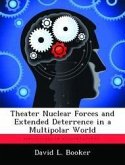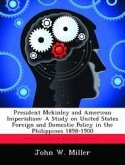Whether to pursue the continued development of a United States antisatellite in the 1990s will prove a difficult choice for defense planners. Making a case for the weapon system in the bipolar world seems "intuitively obvious" to ASAT advocates. The US was faced with a formidable foe possessing weapons in superior numbers in many categories. The Soviet Union also recognized the "force-multiplier" effect space systems had for its forces made the Soviet Union appear an even more formidable enemy. Pursuing a US ASAT in that era appeared to many a logical, necessary choice to negate such advantages. Responding to the perceived threat, the Eisenhower, Kennedy, and Carter administrations chose a "two-track" policy for the US ASAT program-arms control and ASAT research and development short of actual deployment. The Reagan and Bush administrations chose a different policy, opting for outright deployment convinced that verifiable arms controls on ASATs were unachievable and Soviet space systems must not be allowed to operate in sanctuary. Fearing an escalation of the arms race to space, Congress, in large part, has thwarted the plans of these administrations with ASAT testing bans and reduced funding. A new ASAT policy seems appropriate as the US faces an entirely new, but uncertain, threat with the disintegration of the Soviet Union and the rise of a multipolar world. Analyzing the ASAT debate from the past and the dynamics of the emerging space environment and threat can help in formulating that new ASAT policy-a continued ASAT research and development program, short of production and deployment, and arms control combined with collective security to diminish threat uncertainty. As the US reduces defense spending and force structure, such a policy would serve the national interests of the United States as the multipolar world develops.
Hinweis: Dieser Artikel kann nur an eine deutsche Lieferadresse ausgeliefert werden.
Hinweis: Dieser Artikel kann nur an eine deutsche Lieferadresse ausgeliefert werden.








